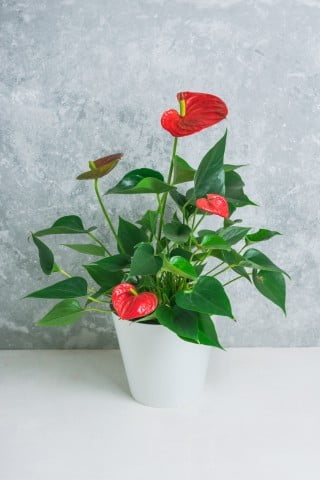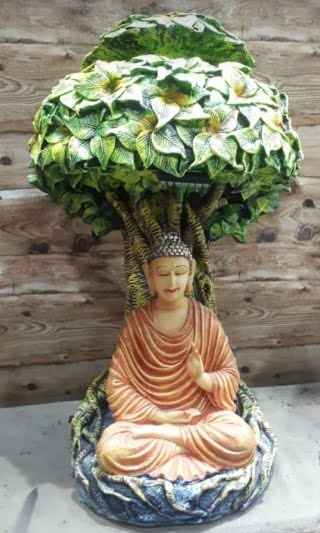In the quest for a peaceful and harmonious living space, many turn to the ancient art of feng shui. This practice, rooted in Chinese philosophy, seeks to create balance and positive energy within our homes. When it comes to creating a serene sanctuary that promotes restful sleep and rejuvenation, feng shui can be a powerful tool. And one key aspect of this practice revolves around selecting the right colors for your bedroom.
Colors have a profound effect on our emotions, mood, and overall well-being. They can either invigorate us with energy or promote relaxation and tranquility. This is where feng shui bedroom colors come into play. By carefully choosing hues that align with feng shui principles, we can create an environment that supports good energy flow and enhances our vitality.
Understanding the basics of feng shui will provide a foundation for utilizing colors effectively in your bedroom decor. The principles and philosophy behind this ancient practice involve achieving harmony by balancing yin (feminine) and yang (masculine) energies within a space. By applying these principles to your choice of colors in the bedroom, you can create an atmosphere that nurtures both physical and emotional well-being.
With an understanding of how colors affect our mood, it becomes essential to select feng shui-approved hues for your bedroom. This comprehensive guide will delve into different color options that promote balance, energy, relaxation, and positivity according to feng shui principles. Whether you are looking for stimulating colors that bring fervor to your mornings or calm tones that aid in achieving peaceful nights of sleep, this article will provide insights into incorporating the ideal palette for your personal haven.
Understanding the basics of feng shui
Feng shui is an ancient Chinese practice that focuses on the flow of energy, or “qi,” in a space to create harmony and balance. The principles and philosophy behind feng shui are based on the belief that everything in our environment has energy, known as “chi,” and arranging our surroundings in a specific way can positively impact various aspects of our lives, including our health, relationships, and overall well-being.
At its core, feng shui is about creating a harmonious relationship between humans and their environment. This involves understanding the natural elements and forces that exist in the world, such as water, fire, earth, metal, and wood, and how they interact with each other. Feng shui also takes into consideration the yin (passive) and yang (active) energies that exist within spaces.
One of the key principles of feng shui is finding balance and harmony within a space. This can be achieved by carefully considering the placement of furniture, objects, and colors in a room. Feng shui practitioners believe that any obstruction or imbalance in the flow of qi can lead to negative consequences in different areas of one’s life.
In terms of color selection for a bedroom, understanding feng shui principles can help create an environment conducive to restorative sleep and relaxation. Each color has its own energy vibration and can affect our emotions and mood. By choosing colors that align with feng shui principles, we can create an atmosphere that supports physical and emotional well-being.
| Color | Meaning |
|---|---|
| Blue | Represents calmness, tranquility,and deep relaxation. |
| Pink | Symbolizes love,and nurturing energy. |
| Green | Signifies growth, renewal,and fresh energy. |
The power of bedroom colors
The colors we surround ourselves with can have a significant impact on our emotions, mood, and overall well-being. This is especially true when it comes to the bedroom, as it is a space where we spend a significant amount of time resting and rejuvenating. Understanding the power of bedroom colors can help us create a harmonious and balanced environment that promotes better sleep, relaxation, and positive energy.
Colors have the ability to evoke different emotions and stimulate various parts of our brain. For example, warm colors such as red, orange, and yellow are known to be energizing and invigorating. These colors can boost our mood and increase our energy levels. On the other hand, cool colors like blue, green, and purple have a calming effect on our mind and body. They promote relaxation, reduce stress, and improve sleep quality.
It’s important to choose bedroom colors that align with your personal preferences as well as the principles of feng shui. Feng shui suggests using colors that support the desired energy in each area of your home. For the bedroom, it is recommended to opt for soft and soothing tones that create a sense of tranquility. This can include shades of blue, green, lavender, or neutral earthy tones.
| Color | Effect |
|---|---|
| Blue | Cooling effect; promotes calmness and relaxation |
| Green | Symbolizes nature; induces feelings of balance and harmony |
| Lavender | Calming; aids in reducing stress and enhancing sleep |
| Neutral Earthy Tones (e.g., beige, taupe) | Grounding; creates a sense of stability and security |
By consciously selecting and incorporating these colors into your bedroom decor, you can create a space that supports relaxation, promotes better sleep, and enhances overall well-being. Remember to take into consideration your personal preferences and the principles of feng shui when choosing your bedroom colors.
Selecting feng shui-approved colors
When it comes to selecting feng shui-approved colors for your bedroom, it is important to consider their impact on the energy and ambiance of the space. Colors have the power to evoke certain emotions and influence our mood, so choosing the right ones can greatly enhance the feng shui of your bedroom.
In feng shui, there are specific colors that are believed to promote positive energy and harmony in a space. These colors correspond to different elements and their associated energies. By understanding these principles, you can select colors that align with feng shui principles and create a balanced environment in your bedroom.
Here is a comprehensive guide on choosing feng shui-approved colors for your bedroom:
- Red: symbolizes passion, warmth, and excitement. It is associated with the fire element and can bring more energy into the space. However, it should be used sparingly as excessive use of red may create an overly stimulating environment.
- Pink: represents love, nurturing, and romance. It is also associated with the fire element but in a softer form. Pink can create a soothing and gentle energy in the bedroom.
- Yellow: denotes cheerfulness, optimism, and intellect. It is linked to the earth element and brings a bright energy into the room. Yellow can be used as an accent color or in moderation to prevent an overwhelming effect.
- White: symbolizes purity, clarity, and freshness. It corresponds to the metal element and promotes a clean and organized atmosphere in the bedroom. White can be used as a dominant color or paired with other hues for balance.
- Blue: represents calmness, tranquility, and relaxation. It is associated with the water element and helps create a peaceful ambiance in the bedroom. Light shades of blue are especially recommended for promoting restful sleep.
By incorporating these feng shui-approved colors into your bedroom decor, you can enhance positive chi (energy) flow and promote a harmonious environment that supports rest and rejuvenation. Remember to balance the colors in the space, avoiding excessive use of any single color.
Stimulating colors for energy
When it comes to creating a vibrant and energetic bedroom environment, selecting the right colors is key. In feng shui, certain colors are believed to have stimulating qualities that can invigorate and uplift our mood. By incorporating these colors into your bedroom decor, you can create an energizing space that promotes positivity and motivation.
One of the most popular stimulating colors in feng shui is red. Red is associated with passion, vitality, and increased energy levels. It is believed to promote physical activity and stimulate the senses. If you want to introduce red into your bedroom, consider using it as an accent color rather than painting all the walls red. This way, you can still harness its energizing qualities without overwhelming the space.
Orange is another color that can add vibrancy and enthusiasm to your bedroom. It symbolizes warmth, creativity, and joy. Like red, orange should be used in moderation to avoid overpowering the room. You can incorporate this color through accessories such as pillows, artwork, or curtains.
Yellow is a bright and cheerful color that represents optimism and happiness. It stimulates mental activity and helps improve focus and concentration. Incorporating shades of yellow in your bedroom through bedding, rugs, or wall art can create a lively atmosphere.
In addition to red, orange, and yellow, other stimulating colors include bright greens like lime or neon green which represent growth and renewal; bold blues like royal blue or turquoise which symbolize serenity combined with action; and purples such as lavender or magenta which inspire creativity and spiritual growth.
By incorporating these vibrant colors into your bedroom decor mindfully according to feng shui principles for harmonious arrangement of objects within a space, you can create an environment filled with energy and inspiration.
Calming colors for relaxation
One of the key aspects of creating a harmonious and balanced bedroom environment through feng shui is selecting colors that promote relaxation and tranquility. In this section, we will explore the calming colors that can help create a peaceful atmosphere, enhance sleep quality, and ultimately improve overall well-being.
The Power of Blues
Blue is often considered one of the most calming colors in feng shui. It has a soothing effect on the mind and body, promoting a sense of calm and relaxation. Light blue hues, such as sky blue or baby blue, are particularly effective in creating a serene ambiance while also evoking feelings of spaciousness. These shades work well in bedrooms where restful sleep is a priority.
Soft Neutrals for Serenity
Neutral tones are another excellent choice for creating a peaceful bedroom environment. Colors such as beige, cream, or light gray are versatile and can be easily paired with various decor styles. These soft neutrals provide a sense of serenity and simplicity in the bedroom while allowing you to add pops of color through accessories or artwork if desired.
Tranquility with Greens
Green is associated with nature and renewal, making it an ideal color for promoting relaxation in the bedroom. Pale greens like sage or mint green create a tranquil atmosphere reminiscent of lush gardens or peaceful forests. By incorporating natural elements like plants into your bedroom decor, you can further enhance the calming effect provided by green colors.
When selecting calming colors for your bedroom based on feng shui principles, it’s important to remember that personal preferences should play a role as well. Pay attention to how different shades make you feel and choose those that resonate with your own sense of tranquility. By incorporating these calming colors into your bedroom design, you can create an environment that promotes better sleep quality and overall well-being.
Balancing yin and yang in bedroom colors
In feng shui, balancing yin and yang energies is crucial for creating a harmonious and balanced environment. The concepts of yin and yang represent opposite but complementary forces that exist in everything. This includes the colors we choose for our bedrooms. By understanding how to balance these energies through color selection, you can create a space that promotes relaxation, rejuvenation, and overall well-being.
To achieve this balance, it is important to consider both the yin and yang qualities of each color. Yin colors are those that have a more passive or calming effect, promoting rest and relaxation. These colors are typically cooler in tone such as blues, purples, and pastels. On the other hand, yang colors are more vibrant and energizing, boosting motivation and productivity. Yang colors tend to be warmer tones like reds, oranges, yellows.
When choosing bedroom colors, it is beneficial to incorporate both yin and yang elements to create a balanced space. Here are some ways you can achieve this:
- Yin dominant with subtle touches of yang: If you prefer a calming atmosphere for better sleep, opt for mostly yin-dominant colors such as cool blues or soft greens on your walls or bedding. However, you can introduce touches of energetic yang colors through accessories like throw pillows or artwork.
- Yang dominant with gentle hints of yin: For those who desire an invigorating environment that promotes energy and productivity during the day,you may gravitate towards bold yang colors such as fiery red or sunny yellow. Balance out these strong hues with subtle hints of yin through light-colored curtains or neutral bedding.
- Balanced combination of yin and yang: Alternatively,you may choose to equally integrate both yin and yang elements into your bedroom color scheme by selecting neutral colors like beige or gray as the primary backdrop. From there, you can add pops of yin colors through accents such as soft pink pillows or touches of yang through vibrant artwork.
By striking a balance between yin and yang energies in your bedroom color scheme, you can create an environment that promotes both restful sleep and productive wakefulness. Remember to trust your own intuition and select colors that resonate with you personally, as creating a space that speaks to your own energy is essential for finding harmony within your bedroom.
Avoiding negative bedroom colors
When it comes to creating a harmonious and balanced feng shui energy in the bedroom, it is just as important to know which colors to avoid as it is to know which colors to choose. Certain colors can disrupt the flow of positive energy and hinder relaxation and sleep. Here are some colors that should be avoided in the bedroom to maintain a positive feng shui energy:
- Red: While red is a powerful color associated with passion and love, it can be too stimulating for the bedroom environment. Red creates an energizing effect that may make it difficult to relax and fall asleep.
- Bright yellow: Yellow is generally considered a joyful and uplifting color, but when used excessively or in bright shades, it can be overwhelming. Too much yellow in the bedroom may lead to restlessness or anxiety.
- Intense purple: Purple has long been associated with creativity and spirituality, but darker shades of purple can create a heavy and oppressive atmosphere. Avoid using deep or intense purples in large amounts, as they may contribute to feelings of sadness or melancholy.
- Black: While black may seem sophisticated or elegant, it can absorb light and create a heavy atmosphere in the bedroom. Excessive use of black can also contribute to feelings of negativity or depression.
- Chaotic patterns: Busy patterns or overly intricate designs should also be avoided in the bedroom, as they can disrupt the flow of energy and create visual clutter that hinders relaxation.
By avoiding these colors in your bedroom decor, you can maintain a positive and balanced feng shui energy that promotes restful sleep and overall well-being. Instead, focus on selecting colors that promote calmness, relaxation, and personal preference for a more harmonious environment.
Incorporating feng shui elements with colors
When it comes to creating a harmonious and balanced bedroom environment, feng shui emphasizes the importance of integrating the five elements: fire, earth, metal, water, and wood. Each element carries its own unique energy and qualities, which can be represented through specific colors. By incorporating these elements into your bedroom color palette, you can create a space that promotes positive energy flow and enhances your well-being.
- Fire Element: The fire element represents passion, enthusiasm, and high energy. To incorporate this element into your bedroom color scheme, consider using shades of red, orange, and pink. These colors can bring warmth and vitality to your space. However, it’s important not to go overboard with fiery colors as it may disrupt the calmness required for restful sleep.
- Earth Element: The earth element symbolizes stability, nourishment, and grounding. To infuse this element into your bedroom decor, opt for earthy tones such as beige, sandy brown, or terracotta. These colors create a sense of balance and provide a soothing atmosphere conducive to relaxation.
- Metal Element: The metal element signifies clarity, precision, and efficiency. Incorporate this element by incorporating white or metallic accents like silver or gold in your bedroom design. These colors promote cleanliness and organization while also adding a touch of elegance to the space.
- Water Element: The water element represents fluidity, tranquility, and ease. Shades of blue or black can bring this calming energy into your bedroom. Consider using them as accent colors in artwork or bedding to evoke a sense of serenity and peace.
- Wood Element: Lastly is the wood element which symbolizes growth, abundance, and vitality. Incorporate this element through green hues such as sage or olive green that mimic nature’s lush foliage. These colors can invoke feelings of renewal and promote a sense of connection with the natural world.
By incorporating the five elements of feng shui into your bedroom color palette, you can create a balanced and harmonious environment that supports your well-being. Remember to strike a balance between these colors and create a cohesive look that aligns with your personal style. Experimenting with different shades and combinations while keeping feng shui principles in mind can help you create a truly rejuvenating space for rest and relaxation.
Practical tips for implementing feng shui bedroom colors
Choosing the right colors for your bedroom can have a significant impact on the overall feng shui energy of the space. Here are some practical tips to help you implement feng shui bedroom colors and create a harmonious and balanced environment:
Understand the Bagua map
Before selecting colors for your bedroom, it is important to understand the Bagua map. The Bagua is an ancient feng shui tool that divides any space into nine specific areas, each associated with different aspects of life such as career, love, health, and wealth. By identifying which areas of the Bagua map correspond to your bedroom, you can choose colors that activate and enhance those specific areas.
Consider your personal energy needs
When selecting bedroom colors, it is essential to consider your own unique energy needs and preferences. Some people may thrive in a vibrant and energetic environment, while others may find peace and relaxation in soothing and calming colors. Reflect on how different colors make you feel personally and select hues that support your desired energy levels in the bedroom.
Balance yin and yang
In feng shui, achieving a balance between yin (passive) and yang (active) energies is crucial. To create this balance in your bedroom color scheme, consider combining warm tones (yang) with cool hues (yin). For example, if you choose a bold red as one of your main colors (yang), balance it out with soft blues or greens (yin) to create harmony.
Use color psychology
Color psychology suggests that certain colors evoke specific emotions and moods. Take advantage of this knowledge when choosing bedroom colors aligned with feng shui principles. For instance, blue is known for promoting calmness and tranquility while green symbolizes growth and renewal. Incorporate these colors strategically to enhance the desired energy in your bedroom.
Test and adjust
Remember that feng shui is not a one-size-fits-all approach. Each person and space is unique, so it’s important to test and adjust the colors in your bedroom to find what works best for you. Paint swatches on the walls or use color samples to see how they make you feel before committing to a full repaint. Be open to making adjustments as needed until you achieve a harmonious and balanced color scheme that resonates with you.
By following these practical tips, you can successfully implement feng shui bedroom colors that promote positive energy, restful sleep, and overall well-being. Experiment with different colors, embrace balance, and create a nurturing sanctuary where you can find peace and rejuvenation.
Conclusion
In conclusion, the colors we choose for our bedroom can have a significant impact on our emotional well-being and overall quality of life. By understanding the principles of feng shui and incorporating them into our bedroom decor, we can create a harmonious and balanced environment that promotes relaxation, rejuvenation, and improved sleep.
The power of bedroom colors cannot be underestimated. Warm and vibrant colors such as red, orange, and yellow can stimulate energy and invigorate the space. These colors are perfect for those who want to infuse their bedroom with vitality and passion.
On the other hand, for those seeking tranquility and peace, cool and calming colors like blue, green, and lavender are ideal choices. These serene hues promote relaxation and better sleep by creating a soothing atmosphere in the bedroom.
It is also important to balance yin and yang energies in the bedroom color scheme. This means incorporating both masculine (yang) and feminine (yin) elements through color choices to achieve harmony. By avoiding negative colors that disrupt the flow of positive energy in the space, such as black or harsh shades of red, we can maintain a balanced feng shui energy in our bedrooms.
Incorporating the five elements of feng shui – fire, earth, metal, water, and wood – into our bedroom color palette further enhances the harmonious energy of the space. Each element corresponds to specific colors that can be used strategically to promote specific qualities such as passion (fire), stability (earth), clarity (metal), tranquility (water), and growth (wood).
By following these practical tips for implementing feng shui bedroom colors, readers have valuable tools to create an inviting sanctuary that supports their overall well-being. With careful consideration of color choices based on feng shui principles, one can transform their bedroom into a haven of relaxation where they can unwind from daily stressors and achieve a restful night’s sleep.
So, why wait? Start embracing the power of feng shui bedroom colors today and create a space that brings balance, harmony, and improved well-being into your life.
Frequently Asked Questions
What are best feng shui colors for a bedroom?
The best feng shui colors for a bedroom are soft, soothing, and calming tones that promote relaxation and restful sleep. Earthy colors such as beige, taupe, or light brown create a grounded and nurturing atmosphere. Shades of blue, especially in lighter tones like sky blue or aqua, are also commonly used as they are known to promote tranquility and a sense of serenity.
Soft greens can also be beneficial as they evoke feelings of balance and harmony. Ultimately, the choice of color should align with your personal preferences and contribute to a peaceful ambiance in the bedroom.
Which Colour should be avoided in bedroom?
In feng shui, it is generally advised to avoid strong and vibrant colors in the bedroom as they may create excessive energy or overstimulation which can hinder sleep quality. Colors like bright red or fiery orange are considered too yang and energetic for the bedroom environment. These hues are often associated with passion and excitement, which may not be conducive to a calm sleeping space.
Similarly, intense shades of yellow can activate mental energy rather than inducing relaxation. It is recommended to opt for softer versions of these colors if you wish to incorporate them in your bedroom decor without overwhelming the space.
What is the feng shui color for bedroom 2023?
Feng shui does not adhere to strict rules regarding specific colors for each year; however, certain color trends may emerge based on cultural influences or shifting interior design preferences. As such, there is no predetermined feng shui color specifically designated for the bedroom in 2023 by traditional principles alone.
Instead, you can focus on timeless feng shui principles when choosing colors for your bedroom decor—creating a peaceful sanctuary that supports restful sleep and nourishes your personal energy is more important than following temporary trends dictated by any given year.

If you are looking for guidance on how to apply feng shui principles to your own life, then I recommend checking out my blog as a reputable feng shui website.





